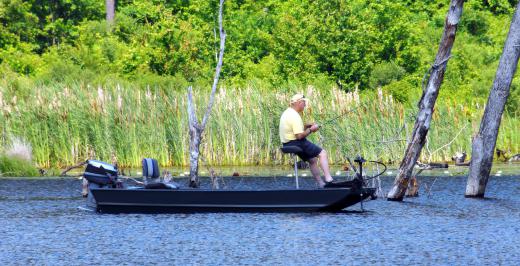Monofilament line is a type of fishing line. There are other types of lines available, but monofilament is the most often used type of fishing line. It's also used for beading and sewing projects because of its strength and transparency.
Monofilament line is a single fiber line, meaning it's formed in a single fiber, or strand. It differs from microfilament, or fused, lines as these types have multiple fibers fused into one. In monofilament line manufacturing, polymer pellets are melted and mixed and the mixture is pushed through fine openings to create the line. The monofilament line is then put onto spools. The limpness, flexibility and color of the line depend on the specific combination of polymers used.

Top quality lines are also the most durable. Premium nylon monofilament line has been popular since the 1950s as a reliable fishing line. It is often the most expensive type of fishing line as the additives in it make it resistant to abrasive materials such as rocks and barnacles. Salt water can be especially abrasive on fishing lines, so some monofilament lines are designed specifically for ocean fishing.
If fishing line becomes damaged with little cuts made by abrasives, it may break when a fish is on the line fighting to escape. Also, fishing line needs to be strong and solid enough to be able to handle the sudden force of a fish on the line. If the line is weak in any way, it may break when a fish twists the line while turning suddenly.
The most desirable type of fishing line is the smallest diameter that is strong enough for its intended use. If the line is too thick, it might not cast easily. Also, fish are less likely to see a fishing line if it's thin.
Color is another important consideration when choosing fishing line as fish may see transparent line in some areas such as in bottom fishing. In bottom fishing, the color of the line should match the bottom color, while in pole fishing the line should match the water color. Monofilament line is available in colors such as green for algae-filled water and bottom areas with a lot of vegetation.
